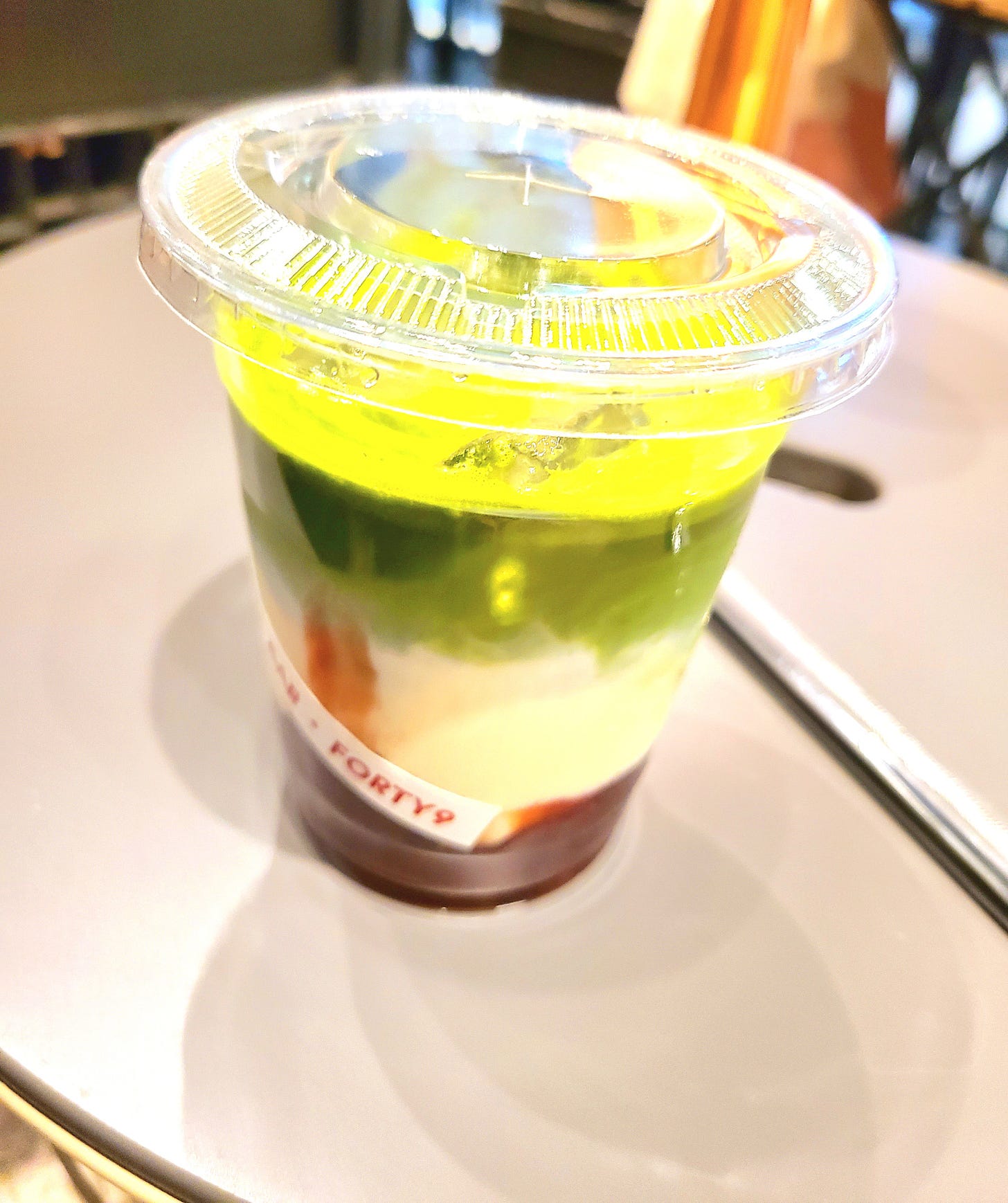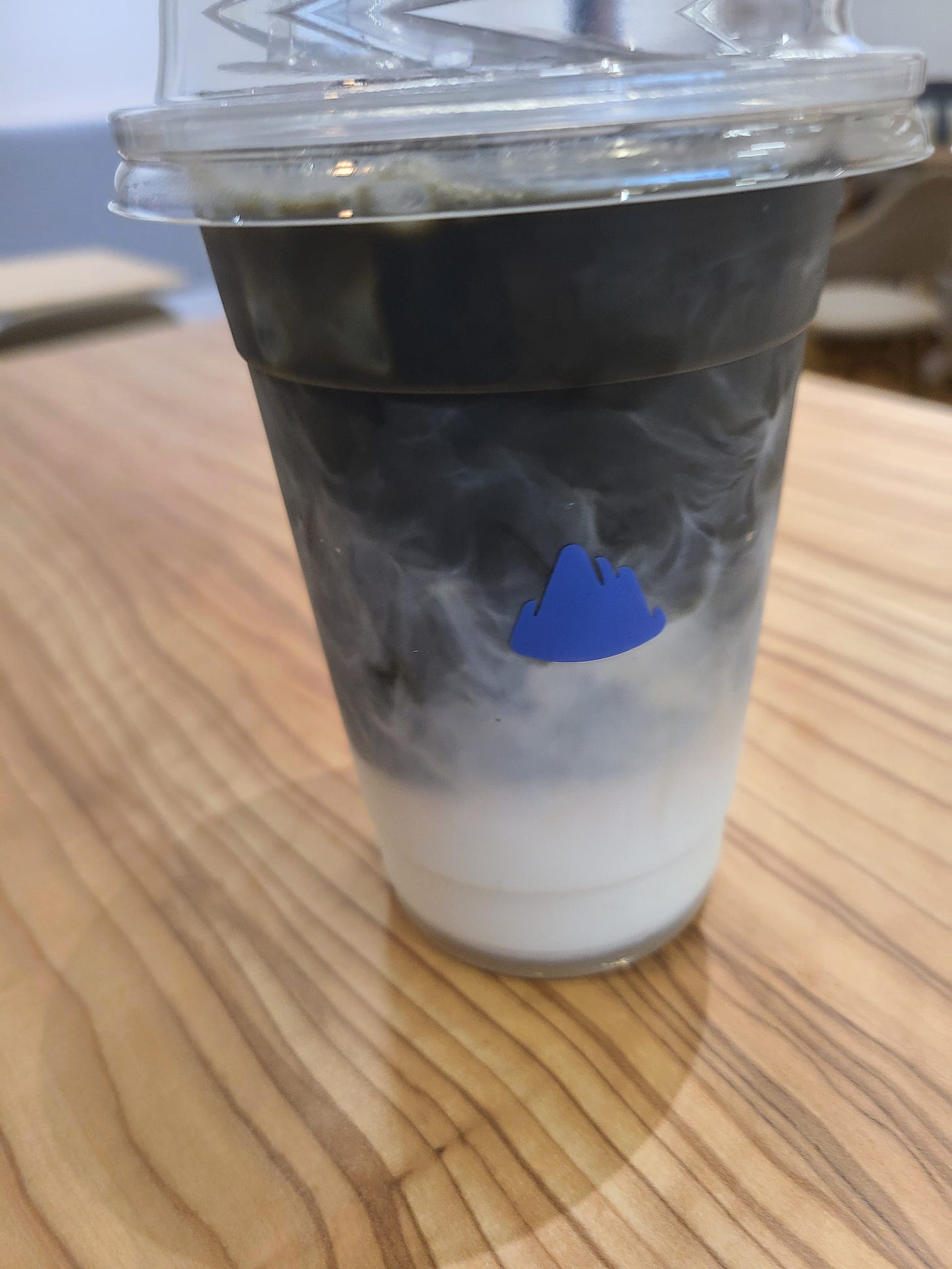From Layered Matcha Lattes to Tea Ceremony:
Why Matcha Is Not Japan’s Exclusive Invention
Encountering a Matcha Latte in Singapore
The matcha latte I encountered in a Singapore café looked quite different from the ones typically served in Japan. At the bottom of the glass were berries and syrup, in the middle sat a layer of milk, and finally, a thick layer of matcha was poured on top, forming a striking green gradient. Stirring it would destroy the layers, but before doing so, the visual pleasure was undeniable. This “layered drink” aesthetic comes largely from Taiwanese tea culture, which has exported this playful form across Asia.
In Japan, however, this style of matcha latte is rarely seen. There, matcha is often framed as the symbol of “Japanese tradition,” usually paired with wagashi sweets and performed within the carefully structured ritual of tea. Sitting in that café in Singapore, I could not help but ask myself: Whose matcha is this, really?
Origins and Etymology of Matcha
The word “matcha” literally means “powdered tea”—matsu (to grind) and cha (tea). The practice of grinding tea leaves into powder and whisking them into hot water originated in Song-dynasty China. In the late 12th century, the Zen monk Eisai brought this method to Japan, introducing it first within temples and rituals.
In other words, matcha was never a purely “native” Japanese product. It was imported, translated, and eventually reshaped. Over time, this powdered tea became inseparable from Japanese aesthetics, but its roots remain unmistakably transnational. What we now call “Japanese matcha” is the outcome of cultural translation rather than an exclusive invention.
The Tea Ceremony as the Art of Form
By the time of Sen no Rikyū in the 16th century, matcha had transformed from a beverage into a cultural performance: the Japanese tea ceremony.
Rikyū’s innovation was not in altering the taste of the tea but in formalizing the entire experience—codifying the selection of utensils, the architecture of the tearoom, and the choreography of gestures. Imported Chinese and Southeast Asian utensils were not simply adopted; they were reinterpreted under the Japanese aesthetic principle of wabi-sabi. In short, the tea ceremony was an act of translation: taking an external practice and rendering it into a uniquely Japanese style.
Thus, tea in Japan has long been less about the drink itself than about the form of the encounter—a carefully staged moment in which host, guest, and environment converge.
Contemporary Beverage Cultures
Fast forward to today, and tea culture in Asia has developed along quite different lines. Taiwan’s tea scene, exemplified by bubble tea, emphasizes playfulness, visual layering, and customization. Drinks are spectacles in themselves: sweet syrups, colorful fruit, chewy tapioca, and strong tea flavors all coexist within a single cup.
On the other side of the Pacific, Starbucks popularized the “matcha latte” in the 1990s, framing it as a superfood. Yet the result—often sugary, syrup-laden, and far removed from the austere bitterness of traditional matcha—resembles more of a dessert than a ritual.
Curiously, Japan itself has been relatively slow to innovate in this area. While cafés in Japan focus on atmosphere and space, they rarely experiment with the drinks themselves in the same playful, layered way that Taiwanese or American chains have. In effect, matcha-based drinks are now being “re-imported” to Japan from abroad—an irony, but perhaps also an inevitability of global cultural flows.
Toward a New Form
So what does this tell us? Matcha certainly represents “Japanese culture,” but it was never born solely within Japan. Its history shows us that Japan’s strength lies not in inventing ex nihilo but in translating and formalizing—taking external influences and transforming them into refined styles.
Seen from a postcolonial perspective, the layered matcha latte in Singapore is itself a hybrid object, belonging to no single culture but emerging in-between. It reflects the layered nature of global identity itself.
If Japan today laments its lack of a distinctive “beverage culture,” perhaps the solution does not lie in competing drink by drink, but in rediscovering its capacity to invent forms of experience. Just as tea ceremony once turned imported powdered tea into a total aesthetic practice, Japanese café culture could reimagine the act of drinking itself as a designed encounter—an interplay of space, gesture, and taste.
The gradient of a matcha latte is more than just pretty; it is a cultural metaphor. Each layer represents translation, reinterpretation, and potential reinvention. Perhaps the next tea ceremony is not hidden in a tearoom but is already being prototyped in cafés around the world.


